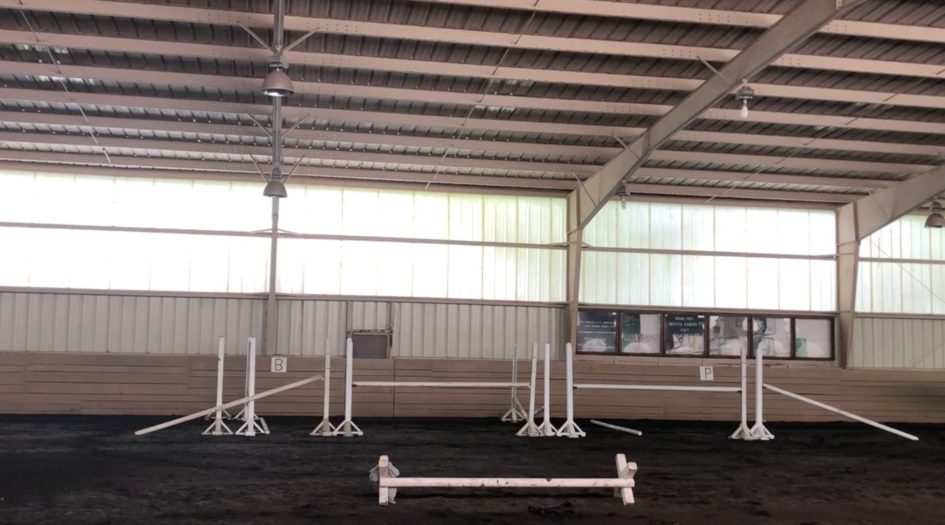I love learning how people train their young horses. I was recently in Germany and went to a training barn where they breed 1,000 horses a year. They send hundreds of these horses through a training program to learn both flatwork and jumping skills. I had the good fortune to see how they train their 3 and 4-year-old warmbloods how to jump.
Setting Up a Free Jump Exercise
The first step in teaching a horse to jump is to send it through a free jump exercise. Typically, it is a pole on the ground, 6 feet in distance, then a low jump (cross-rail), then one-stride (18 to 20 feet) to an oxer. The pole sets the horse up for the low jump and the low jump sets it up for the oxer. As the horse gets more familiar with the exercise, you can raise the oxer. There are several goals with free jumping. First, it teaches the horse how to jump without putting a rider on its back. Second, it creates a positive experience for the horse as there is a lower chance for error. Third, it gives people an idea if the horse has the talent to be a jumper.
Setting up the free jumping exercise has to be done on the long side of an arena. You have to be able to send the horse down the jumping “chute” without them figuring a way out. Set up your jump chute with the arena wall on one side and a fence with standards and poles on the other side. You need to be able to move the horse through the chute and also give them enough room before the pole on the ground to establish the pace you want.
Build Up the Jumps Slowly
Before setting any jumps, the horse needs to go through the exercise several times with all the poles on the ground. Allow them to get comfortable moving over the poles and get used to what you are asking. Let your horse get comfortable with that exercise, then put up the cross-rail and leave the jump that will become an oxer down. Next, make a vertical out of the second jump. Do this once or twice and then add the back rail for the oxer. If 18 feet gets too short for one stride, lengthen the space out to 20 feet. You want to make sure the horse is doing it comfortably.
When free jumping, you need to make sure you do not allow the horse to rush the exercise. They should come into the exercise at no more than a trot. The goal is to trot over the pole to the cross-rail, then canter one stride to the oxer. The horse needs to learn to not be nervous and to enjoy the jump. This exercise needs to be relaxed… if your horse gets frazzled, you should stop and do something different. If your horse is doing well, you can raise the height of the oxer as you see fit.
I would not do this exercise more than 10 to 12 times in one session. When you are finished, lower everything back to just poles on the ground and let the horse do it one more time. This will guarantee you end on a positive experience.
Confidence Is Key
When training a horse to jump, everything you do needs to be positive and fun for the horse. If the horse gets scared or knocks a jump down, just lower that jump and try it again. Besides teaching a horse to jump, this free jumping exercise helps build confidence. When a horse can jump without the weight of a rider on its back, it learns its own form and will continue what it has learned when a rider does jump with the horse.
Learn More
Want to learn more exercises you can do to build your horse’s confidence over jumps? Check out our blog post on training the water jump here!


Leave a Reply